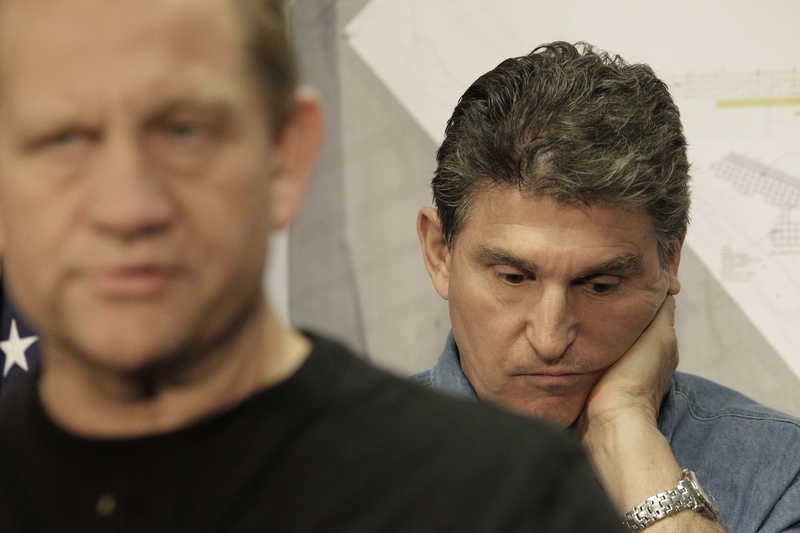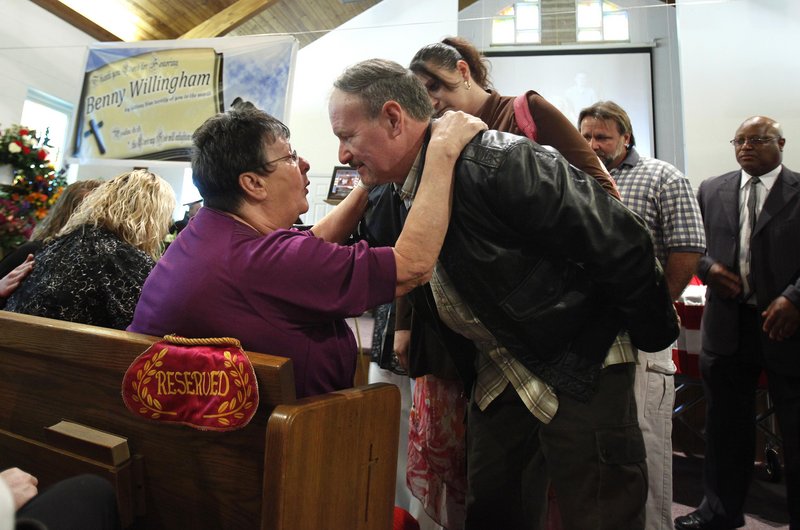MONTCOAL, W.Va. — Authorities said early this morning that crews have found the bodies of four miners missing nearly a week since an explosion at a West Virginia coal mine, bringing the death toll to 29.
Gov. Joe Manchin said, “The journey has ended.”
Officials say the mission now is to recover all 22 bodies still inside the Upper Big Branch mine 30 miles of Charleston. Seven other bodies were recovered after the blast Monday and two other miners were injured.
The higher death toll makes it the worst coal mine disaster in the U.S. since 1970 when 38 were killed at Finley Coal Co. in Hyden, Ky.
Authorities said early this morning that they will start bringing out the bodies so they can be identified.
Rescuers had hoped the missing miners had made it to the chamber stocked with food, water and enough oxygen for several days.
“We are praying for a miracle,” President Obama said in Washington.
Late Friday, officials said their fourth try to check the chamber was progressing better than previous ones and crews were within 2,000 feet of where they needed to be.
At that time, Manchin said he anticipated the rescue mission would end soon. “We believe that without any unforeseen problems … (we) will be able to bring some finality to it tonight,” he said.
About a dozen people huddled around a television set at a pizza parlor near the mines to listen to Manchin speak.
“We just keep hoping we’ll have closure soon – good or bad, as long as it ends soon,” said Sarah James, a 23-year-old whose husband is a surface miner.
In the earlier try Friday, rescuers made it 1,000 feet underground and five miles into the mine to examine one of the chambers, but no one was inside and smoke forced them to turn back before they could check a second one that would represent the last hope the four were alive.
Crews were able to flush the chamber with nitrogen to put out whatever was creating the smoke that had forced rescuers to turn back.
Meanwhile, more than 300 people packed the Mullens Pentecostal Holiness Church for the funeral of Benny Willingham, a 61-year-old miner who was five weeks from retiring when he died.
The Rev. Gary Pollard, pastor of the Mullens Family Worship Center, said he and Willingham, a deacon, had weekly 45-minute talks – about God, about Christian living, about their families and friends – every Sunday morning for the past five years.
Pollard said the last time he saw Willingham, the miner’s words were almost prophetic: “If I die tomorrow, I’ve lived a good life.”
“He wasn’t the biggest man in town. He didn’t have the stature of some of you sitting here,” said Pollard, whose own church across town was too small for the crowd. “But if you could see the size of this man’s heart, you’d see a giant.”
Willingham was dressed in a red shirt in the open coffin, jet-black hair and mustache neatly combed, family snapshots tucked in the satin around his head and shoulders. The image of a pick, shovel and miner’s helmet was embroidered in the fabric along with his name, and a flag draped the lower half of his coffin in a nod to his service in the Air Force during the Vietnam era.
Three Air Force veterans, friends of his for more than 40 years, traveled with their wives from Ohio, California and North Carolina to say goodbye.
Officials suspect the blast was caused by a buildup of methane gas. In the nation’s capital, Obama said he asked federal mine safety officials to give him a report on the disaster next week, and the House and Senate said they would hold hearings.
In the days since the explosion, details have emerged about a long list of safety violations at the mine. The owner, Massey Energy Co., has been repeatedly cited and fined for problems with the system that vents methane and for allowing combustible dust to build up. CEO Don Blankenship has strongly defended the company’s record and disputed accusations from miners that he put coal profits ahead of safety.
Even after the blast, federal Mine Health and Safety Administration spokeswoman Amy Louviere said Massey dragged its heels getting nitrogen to the site. Rescuers eventually pumped about five truckloads into the mine.
“When we began asking for it, we, it didn’t arrive as quickly as it could have,” Louviere said.
Massey spokesman Jeff Gillenwater rejected the charge.
“Completely untrue,” he said. “There was nitrogen on site long before it was used.”
Send questions/comments to the editors.




Success. Please wait for the page to reload. If the page does not reload within 5 seconds, please refresh the page.
Enter your email and password to access comments.
Hi, to comment on stories you must . This profile is in addition to your subscription and website login.
Already have a commenting profile? .
Invalid username/password.
Please check your email to confirm and complete your registration.
Only subscribers are eligible to post comments. Please subscribe or login first for digital access. Here’s why.
Use the form below to reset your password. When you've submitted your account email, we will send an email with a reset code.